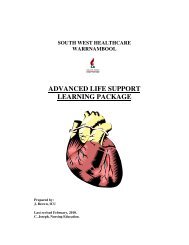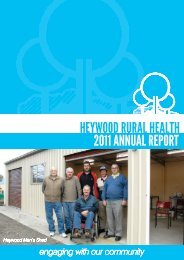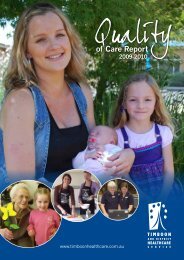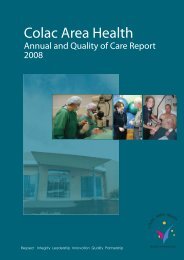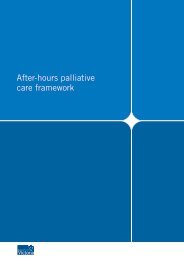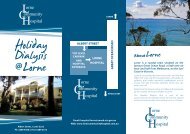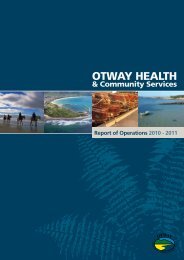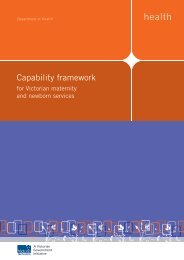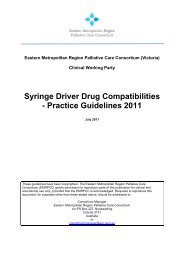Self Directed Learning Package - University of Queensland
Self Directed Learning Package - University of Queensland
Self Directed Learning Package - University of Queensland
- No tags were found...
You also want an ePaper? Increase the reach of your titles
YUMPU automatically turns print PDFs into web optimized ePapers that Google loves.
159 • <strong>Self</strong> <strong>Directed</strong> <strong>Learning</strong> <strong>Package</strong> - Careworker<strong>Self</strong>-directed learning package:Introductory careworker quiz answersSection 11. With a palliative approach, the focus is on managing symptoms and increasing quality-<strong>of</strong>-life rather thancuring illness.• A palliative approach aims to improve the quality-<strong>of</strong>-life for people with an eventually fatal condition andtheir families.• It does this by reducing their suffering through early identification, assessment and treatment <strong>of</strong> pain,physical, cultural, psychological, social and spiritual needs.• A palliative approach is not just for the end stages <strong>of</strong> an illness.TrueFalse2. A palliative approach discourages discussion about death and dying as it may upset the resident.• A palliative approach encourages open and early discussion about death and dying which helpsadvance care planning.3. A resident completes a written Advance Directive. This is considered a legal document.• So long as advance directives are filled out correctly including the appropriate witness’s signatures then yes,they are legal documents.• They set out a resident’s end <strong>of</strong> life care wishes or appoints another person as decision maker, usually calleda guardian or medical power <strong>of</strong> attorney.4. Shortness <strong>of</strong> breath is the same thing as dyspnoea.• Dyspnoea is an awareness <strong>of</strong> uncomfortable breathing and can also be called breathlessness or shortness <strong>of</strong> breath.5. It is a good idea to ask a resident to rate his shortness <strong>of</strong> breath by asking him to count how many breathshe takes a minute.• Because health pr<strong>of</strong>essionals tend to under-report a patient’s breathlessness the resident should beencouraged to rate the severity themselves (if cognitively able).• This should be done using a vertical or horizontal rating scale from 0 (no shortness <strong>of</strong> breath) to 10 (severeshortness <strong>of</strong> breath).



